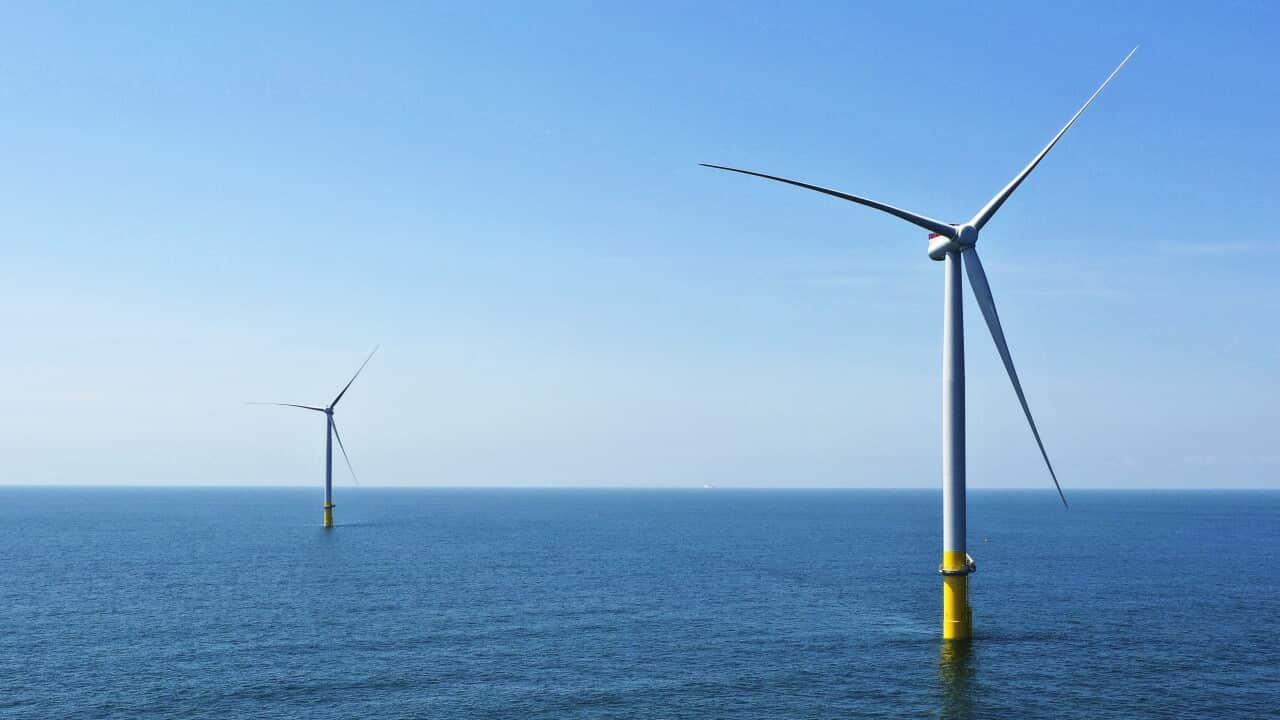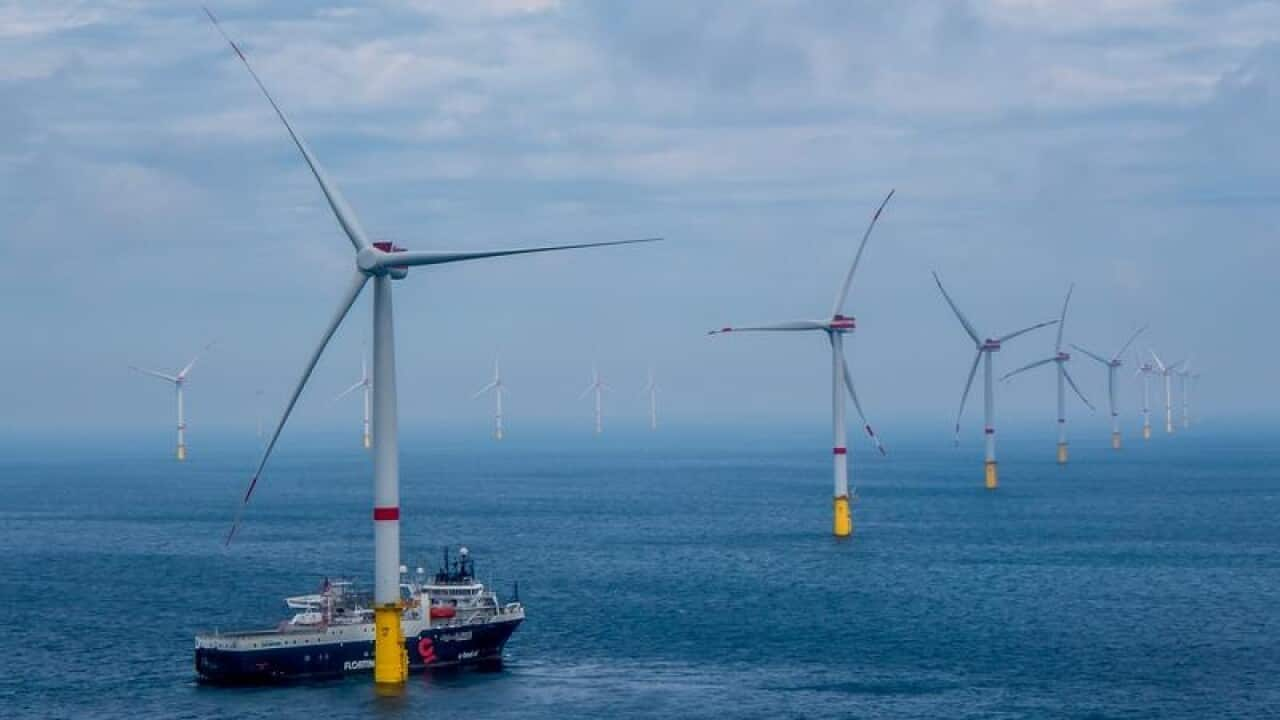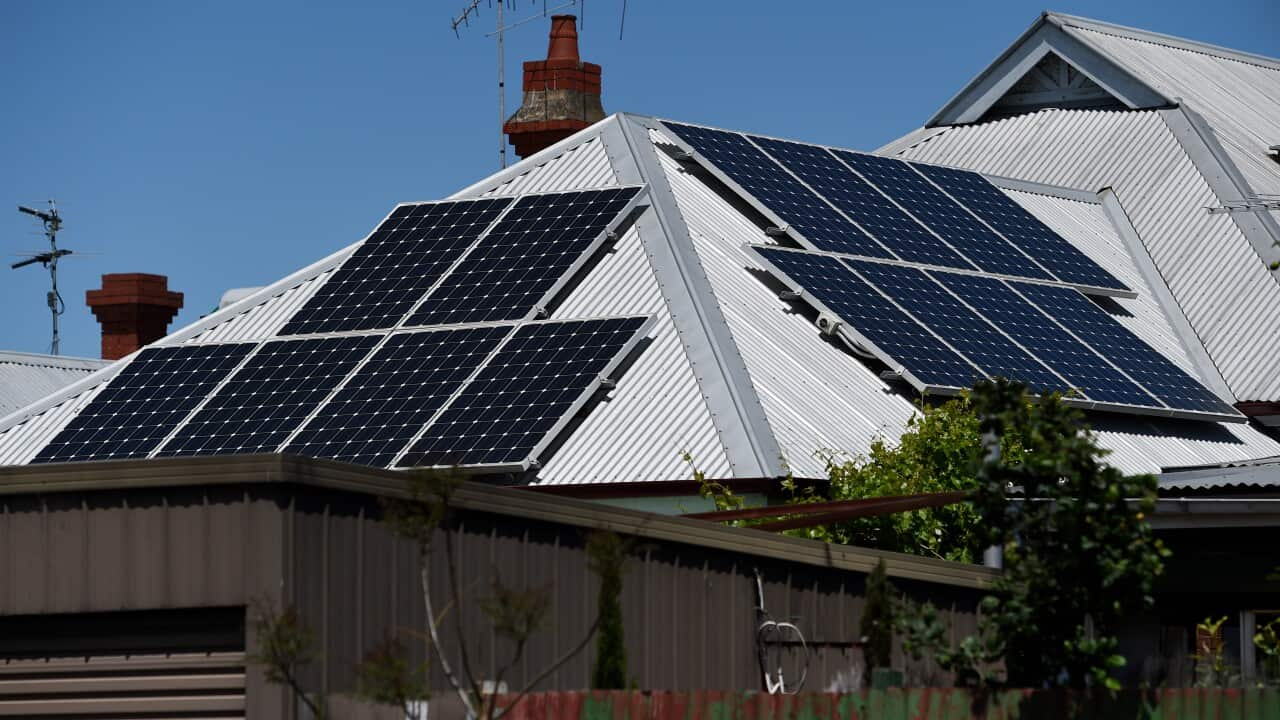There's no evidence that offshore wind turbines cause harm to whales, scientists say.
But a misinformation campaign on Facebook, spreading the completely false claim that the turbines kill hundreds of whales a year, has taken hold, while Guardian Australia reports posters making similar claims have popped up in NSW's Hunter and Illawarra regions.
Australia doesn't have offshore wind farms yet but the federal government has announced for offshore wind development, one of which is off the coast of Wollongong.
Figures from the right side of politics have long railed against wind farm technology.
Former prime minister Tony Abbott called them the "dark satanic mills of the modern era", while former US president Donald Trump claimed offshore wind turbines were "causing whales to die in numbers never seen before".
Fact-checking Trump's Claims, the US' peak body for fisheries, the National Oceanic and Atmospheric Administration said "there is no scientific evidence that noise resulting from offshore wind site characterisation surveys could potentially cause mortality of whales."

Hundreds of surfers take part in a paddle out at Wollongong Main Beach following a rally at Flagstaff Point against a proposed offshore wind farm, which would be located 10km off the Illawarra coast. Source: AAP / Dean Lewins
Opponents of the Wollongong wind farm plan held a protest on November 29, where concerns about the environment and whales being killed were raised.
That the turbines kill whales is just one claim among dozens that have been used to spread fear about wind energy, experts said.
There's no evidence that turbines on land cause harm to koalas, but the Liberal party's official Facebook page recently suggested they did in a post featuring federal Energy Minister Chris Bowen and the text: "Wind farms killing koalas: Euthanasia will be conducted using blunt force trauma."
What motivates opposition to wind energy?
Often people who are anti-wind energy are pro-fossil fuel energy, Mark Diesendorf, a sustainable energy expert at the University of New South Wales, told SBS News.
"There's a range of views, but I would say the strongest views ultimately come from promoters of fossil fuels and nuclear power, and they believe in concentrated sources of power.
"It's almost a psychological identification."
Australian farmers who host wind turbines on their properties are paid tens of thousands of dollars per year.
But there is sometimes opposition from neighbours or others in farming communities to the turbines, which can lead people to spread misinformation about them, Diesendorf said.
Sometimes the opposition is just opposition to change, or a perception that the turbines spoil the rural landscape, he said.
Misinformation has a long shelf life
Misinformation about wind energy can continue to spread even months and years after false claims have been disproven, research director at University of Technology Sydney's Institute for Sustainable Futures Sven Teske told SBS News.
"It sticks even though it's not true — it is a tactic to basically push back a development you don't want," he said.
"The last argument they basically have right now is that it doesn't look good and that it's bad for the environment, which has been proven to be untrue."
He said a turbine killing a whale has never been documented but "what is documented is that climate change will threaten whales and koalas and offshore wind is probably the most industrial-scale renewable power generation we have, with electricity generation volumes equal to a coal power plant."
If people have concerns about the technology, they should be explored "step by step" through research, he said.
Federal government facing Opposition blowback over wind
The federal government wants to build a 1,461-square-kilometre site between 10km and 30km out from the shores of Kiama. It says the project will deliver jobs and clean energy for NSW.
Bowen says Australia has some of the best wind resources in the world.

Federal energy minister Chris Bowen says Australia has some of the best wind resources in the world. Source: AAP / Caroline Brehman / EPA
The government argues the site will generate up to 4.2 gigawatts of power, enough to supply as many as 3.4 million homes.
Locals say the impact on ocean life would be devastating, an effect that hasn't been demonstrated at wind farm sites anywhere in the world.
Opposition leader Peter Dutton said animals were at risk and that there had been “no environmental consideration of what these huge wind turbines, 260 to 280 metres out of the water, will mean”.
Nationals MP Barnaby Joyce encouraged Port Stephens residents to take the fight against wind turbines "to Canberra" at a recent rally.
When in government, the Coalition introduced legislation for the development of an offshore wind industry, though it has appeared to walk back its support since leaving office.
Australia has unique advantages when it comes to expanding wind energy, Teske said.
"International experience of the past 25 years helps Australia as other countries developed it from scratch and there was no research.
"We don't really need to repeat the same mistakes, as we can learn from others."
He said much of the existing fossil fuel energy infrastructure could be transitioned to wind and solar and, in some places, offshore wind could be connected to the grid near existing coal plants.
This would also save new power lines needing to be constructed, he said.
- With additional reporting by AAP











